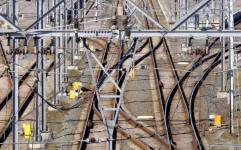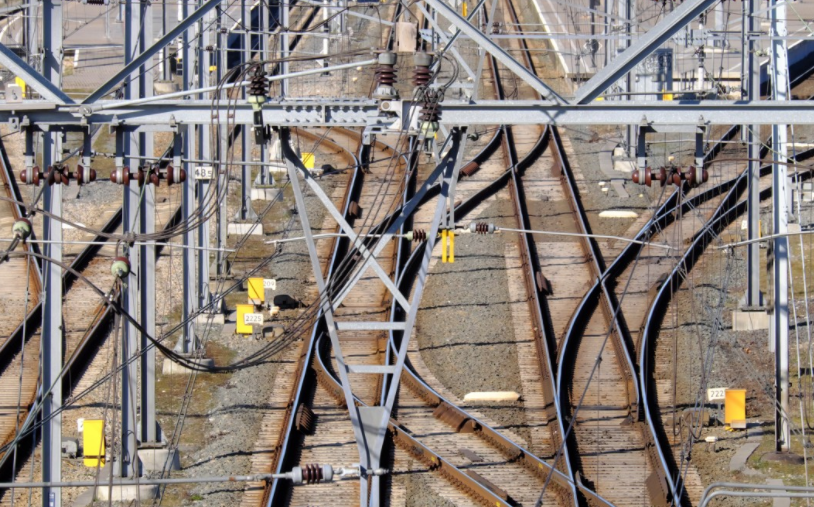
Application of RFID in the field of railway cold chain logistics
[ad_1]
As we all know, railway transportation is suitable for the transportation of long-distance, large-volume goods. my country has a vast territory and the production and sales of refrigerated food are far apart. This provides favorable external conditions for the development of cold chain logistics by railways. However, judging from the current situation, the volume of railway refrigerated transportation in my country is relatively small, accounting for less than 1% of the total demand for refrigerated transportation in the society, and the advantages of railways in long-distance transportation have not been fully utilized.
This article discusses the application of RFID technology in the field of railway cold chain logistics after the completion of the railway cold chain logistics center.

1. The main problems of the traditional model
1. The transportation process is not transparent
In order to reduce costs, third-party transportation companies may turn off the refrigerator during transportation and turn on the refrigerator when they arrive at the destination soon, and they cannot achieve the entire cold chain. When the goods are delivered, although the surface freezes well, the quality has actually deteriorated.
2. The stored procedure is not transparent
Due to cost considerations, storage companies may use low-voltage power periods at night to turn on, and equipment to shut down during the day, causing the temperature of the cold storage to fluctuate by more than 10°C, and the quality of food is degraded.
The traditional monitoring method is to use a temperature recorder to measure. This method requires network and manual intervention to export the data, and the data is in the hands of the carrier and warehousing enterprises. If the cargo owner wants to obtain the data, it will be difficult. At present, some large domestic pharmaceutical companies and food companies would rather invest large sums of money to build their own cold storage and transportation fleets than to use the services of third-party cold chain logistics companies, and this is obviously costly.
3. Invalid handling
When the transportation company picks up the goods in the production company, if the pallet cannot be transported, the worker needs to move the product from the pallet to the refrigerated truck; after the goods arrive at the storage or retail enterprise, they need to unload the goods from the refrigerated truck and put it on the pallet In this way, it is easy to damage the packaging and affect the quality of the goods.
4. Inefficient warehouse management
In and out of the warehouse, you need to provide paper documents first, and then manually enter the computer, which is inefficient and has a high error rate.
5. Waste of human resources
The loading and unloading of goods and the palletizing require a lot of labor.
Two, optimization strategy
1. Build a modern railway cold chain logistics center to provide a complete set of services from transportation, warehousing, sorting, and distribution of goods.
2. The application of pallets based on RFID technology is introduced into the field of cold chain logistics (ie, electronic tags are built into the pallets). Realizing the electronic informationization of pallets is of great significance for improving the level of logistics management and reducing logistics costs.
3. Introduce the concept of tray sharing. Provide pallets with embedded temperature labels for free or lease them to cooperative manufacturers to realize the consistent transportation of pallet operations in the railway cold chain logistics center, improve logistics efficiency and reduce costs.
3. Optimized cold chain logistics model
1. Storage
When entering the warehouse, the basic information (including production date, type, weight, etc.) of the pallet cargo is written through the handheld terminal binding.
2. Transport
The goods are transported together with the pallet. The temperature sensor in the electronic tag can collect temperature information at any time and transmit it to the enterprise in real time via GPRS, so that the enterprise manager can grasp the temperature in the compartment while sitting in front of the computer. Once abnormal, the system will Automatic alarm.
3. Storage
The forklift removes the goods and the pallet together and places them on the conveyor line. The detection door is equipped with a fixed reader. When the RFID tag on the cargo box and pallet enters the radiation range of the reader, it can be read. Check basic information before the screen, no need to open the box and inspect the goods manually.
4. Out of the library
(1) Distribution. After receiving the order, arrange the sorting of the goods and update the RFID information of the pallet goods. The sorted goods will be loaded into new pallets, and the information will be bound with RFID tags. After acceptance by the enterprise, the pallets are brought back by the storage center.
(2) Self-reporting by the enterprise. Workers directly unload the goods from the pallets and load them onto the transport vehicle (there is no need to provide pallets at this moment).
Fourth, the expected effect
1. Increase the transparency of cold chain management. Due to the unique code characteristics of RFID, it can be used to realize the logistics tracking of goods throughout the cold chain.
2. Simplify the operation process and improve logistics efficiency. Embedding RFID tags on the pallets and using automated equipment to send goods out/into the warehouse not only reduces labor but also saves time.
3. Improve the quality of inventory. Cooperate with the warehouse management system to achieve real-time inventory to ensure accuracy.
4. Reduce costs and increase revenue. RFID is used for inventory management, which can reduce manual review work and ensure the safety and accuracy of the quality of stored goods. The sharing of pallets can reduce transportation costs and improve the competitiveness of railway cold chain logistics centers.
V. Conclusion
The application of RFID technology has brought a turning point for the informatization and intelligent management of cold chain logistics centers. As the technology continues to mature, RFID will be more widely used in the entire cold chain supply chain.
[ad_2]



